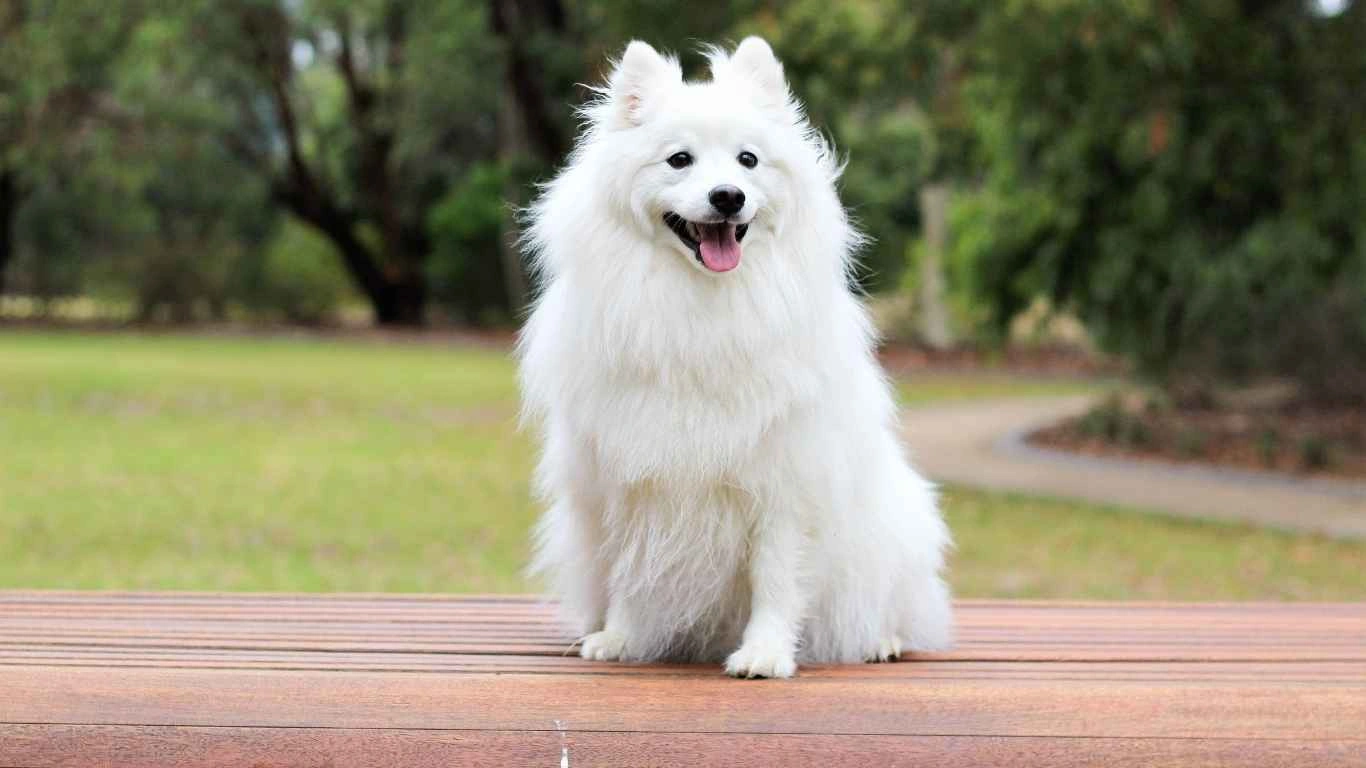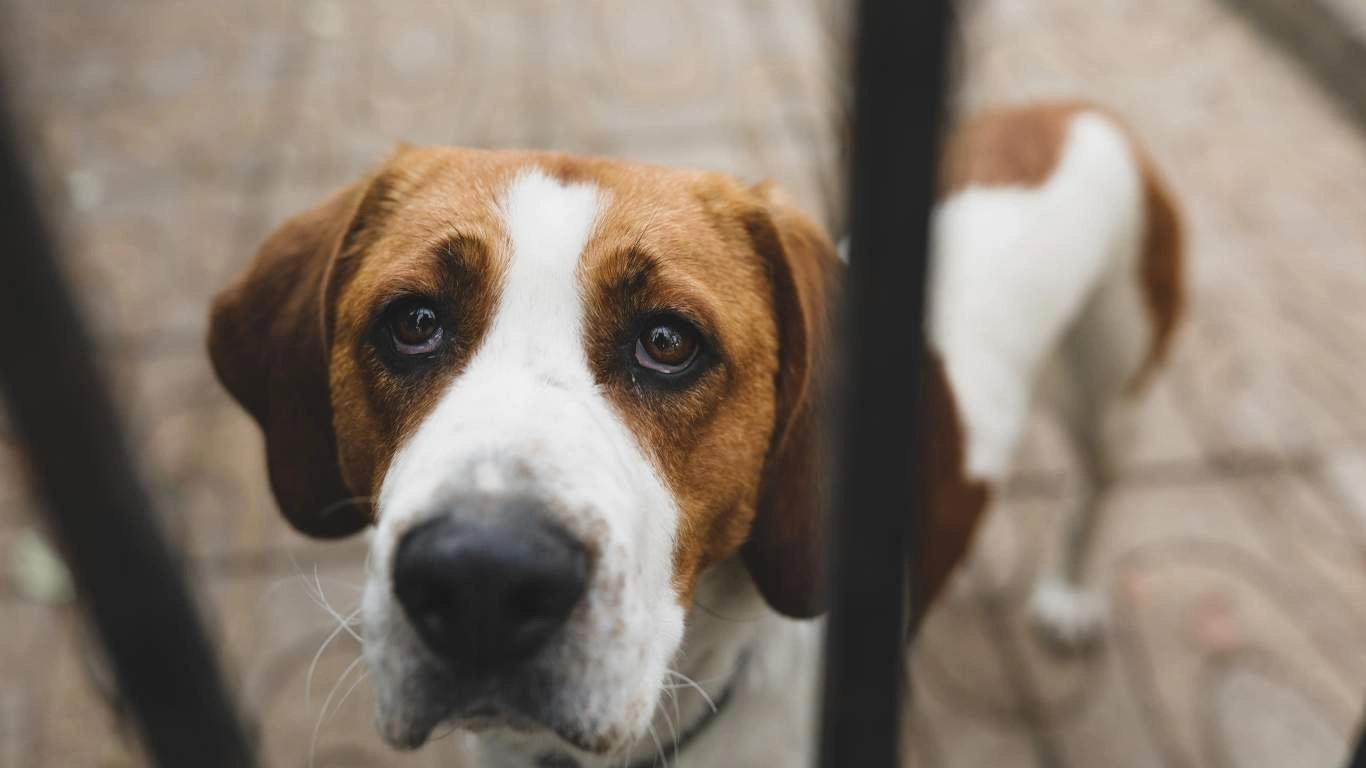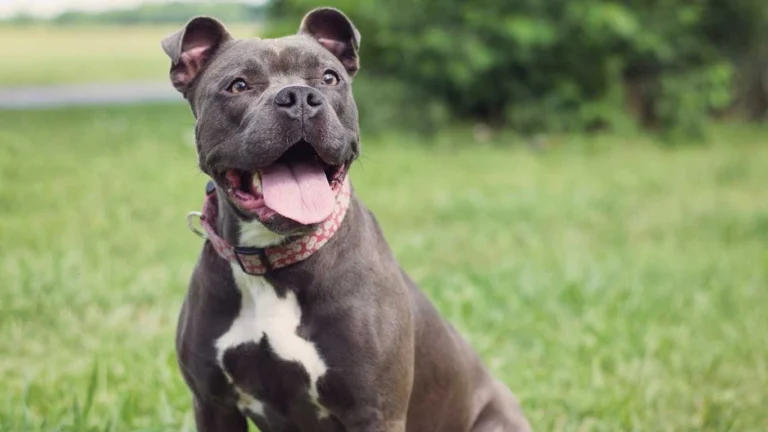Best Food for Dogs with Liver Shunt: Top Choices That Actually Help
If you’ve ever cared for a pup with health complications, you know how overwhelming it can be to find the right diet. One of the trickier conditions I’ve come across in my years working as an Animal Care Specialist is a liver shunt. And if you’re here, you’re probably searching for the best food for dogs with liver shunt—which means you’re already doing right by your fur baby. Kudos to you for that. It’s not a walk in the park, but you’re not alone in this. I’ve worked with dozens of dogs in clinics and shelters struggling with liver issues, and I’ve picked up a lot along the way. So let’s break this down, one bite at a time.
Understanding Liver Shunt in Dogs

Liver shunts, also called portosystemic shunts (PSS), are basically abnormal blood vessels that bypass the liver. This means toxins that should be filtered out just cruise through the body unfiltered. Over time, that causes all sorts of issues—from neurological symptoms like seizures or aimless wandering, to digestive problems and even stunted growth in puppies.
When I worked at the shelter, we had a sweet little schnauzer mix named Milo who was diagnosed with a liver shunt. He looked fine at first, just a bit sluggish. But as weeks passed, he started acting confused, and sometimes he’d just stand in corners, dazed. Turns out, his liver wasn’t filtering toxins properly, and it was affecting his brain. Scary stuff—but with a tailored diet and some vet-recommended meds, we saw real progress.
Why Diet Matters More Than You Think

Let me be real with you: diet can make or break how well a dog with a liver shunt manages day-to-day life. I’ve seen firsthand how a simple change in food transformed dogs who were lethargic and sickly into energetic, tail-wagging versions of themselves.
The liver plays a massive role in processing nutrients and detoxifying the body. When it’s not doing its job right, we’ve got to be super intentional about what goes into your dog’s bowl. That means choosing foods that are low in protein (but with the right kind of protein), high in digestibility, and supportive of liver function.
Top Nutritional Priorities for Liver Shunt Dogs
- Low to moderate protein content: But not just any protein—focus on high-quality sources like eggs or dairy. Plant-based proteins (like soy) are also sometimes recommended.
- Highly digestible ingredients: Think rice, oatmeal, and sweet potato. The easier the digestion, the less strain on the liver.
- Lower copper levels: Too much copper can accumulate in the liver, which is a big no-no. Many prescription liver diets are formulated with this in mind.
- Added antioxidants and vitamins: Especially B-vitamins and zinc. They help support metabolic functions and prevent oxidative stress.
One of my go-to recommendations for owners was a prescription hepatic diet—you can get those from your vet, and they’re tailor-made for liver issues. But I also met folks who preferred to go the homemade route (with guidance, of course). If that’s you, hang tight, because I’ll be getting into homemade food tips later in this article.
Common Symptoms That Signal a Diet Change is Needed

If you’re unsure whether your dog’s food is doing more harm than good, watch out for these signs. Some of these I’ve seen often in liver shunt cases, and they’re usually a big red flag that the current diet isn’t cutting it:
- Lethargy: If your normally energetic pup is dragging, it could be due to toxins building up.
- Loss of appetite: Not all picky eaters are just being picky. Liver issues often cause nausea or a lack of interest in food.
- Strange behavior: Walking in circles, staring at walls, or even aggression can be signs of hepatic encephalopathy (a brain issue caused by toxins).
- Frequent vomiting or diarrhea: A poor reaction to food is pretty common with liver shunt pups, especially if the diet is too protein-heavy or fatty.
I remember one Labrador, Daisy, who came into the clinic for what the owner thought was just a bug. After a little bloodwork and some conversation, we realized it was a liver shunt. Once we got her started on the right hepatic formula and supplements, it was like flipping a switch. Her appetite came back, and she was chasing tennis balls within a few weeks.
It’s Not Just About Food—It’s About the Right Food
Look, there are plenty of dog foods on the market, but not all are going to cut it for pups with liver issues. You’ve got to be a label detective. And if the ingredients list starts to look like a science experiment, that’s your cue to dig deeper. I always tell pet parents—if you don’t recognize most of the ingredients, your dog’s liver probably won’t either.
Stick with simple, clean ingredients, and avoid mystery meats or artificial additives. If a food says it’s “grain-free” but makes up for it with a bunch of legumes or high-fat content, it’s not doing your dog any favors. Trust me, I’ve been elbows-deep in kibble bags long enough to know the red flags.
Homemade vs. Commercial Diets: What’s Best for Dogs with Liver Shunt?

One of the most common questions I get from pet parents dealing with liver shunt is, “Should I just make my dog’s food at home?” And honestly, there’s no one-size-fits-all answer here. I’ve seen some dogs absolutely thrive on carefully prepared homemade diets. I’ve also seen pups do really well on prescription commercial formulas. It all depends on your time, your comfort level, and your dog’s specific needs.
With homemade diets, the biggest perk is control. You know exactly what’s going into your dog’s bowl. When I helped formulate a meal plan for a rescued Yorkie with a liver shunt, we stuck with boiled egg whites, white rice, pumpkin, and a sprinkle of calcium carbonate. It wasn’t gourmet, but she loved it, and more importantly—it worked. Her ammonia levels came down, and the neurological symptoms eased up within a few weeks.
But homemade isn’t as simple as tossing leftovers into a bowl. You’ll want a veterinary nutritionist’s input. A diet that’s too low in protein can lead to muscle wasting, while too much (or the wrong kind) can overwhelm the liver. Balance is everything here.
Tips for Creating a Liver-Friendly Homemade Diet
- Stick to egg whites: They’re packed with high-quality protein but don’t burden the liver like meat-based proteins can.
- Use white rice or sweet potatoes: Easy to digest, gentle on the gut, and a good source of energy.
- Add calcium carbonate or ground eggshell: Dogs with liver issues often need calcium to help balance phosphorus levels.
- Include fiber: Pumpkin, green beans, or a little bit of beet pulp can help flush out toxins via the digestive system.
That said, if you’re not comfortable measuring nutrients and balancing macros, commercial diets are a safer bet. Especially veterinary prescription diets, which are formulated with all the right stuff and backed by research.
Top Vet-Recommended Dog Foods for Liver Shunt Support

When it comes to commercial options, you’ll definitely want to ask your vet for input—but there are a few tried-and-true formulas that have come up repeatedly in both my clinical experience and in follow-ups with pet parents.
Popular Veterinary Diets for Liver Health
- Hill’s Prescription Diet l/d: This one’s kind of the gold standard. Low in protein, low copper, high in digestible carbs, and loaded with antioxidants. I’ve seen some amazing turnarounds with this food.
- Royal Canin Hepatic: Another great option—this one’s especially good for picky eaters. One beagle I worked with literally refused everything… until we opened this bag.
- Purina Pro Plan Veterinary Diets Liver Function (LF): A solid choice, and sometimes more budget-friendly than the other two. Works great for maintenance once symptoms are under control.
These diets are all formulated to manage liver load, support detoxification, and provide essential nutrients without overwhelming the system. A lot of them include added zinc and vitamin K, which are often depleted in dogs with liver issues. That kind of detail is hard to replicate at home unless you’re working closely with a nutritionist.
Watch Out for These Commercial Diet Red Flags
Not all “liver support” or “limited ingredient” foods on the shelf actually help with liver shunts. Here’s what to avoid:
- High-protein “performance” formulas: Way too much stress on the liver, even if they claim to be “premium.”
- Grain-free without reason: Many grain-free foods replace grains with legumes or potatoes, which aren’t always ideal and can lead to other health issues.
- Unclear ingredient sourcing: If the protein source is something vague like “meat meal,” skip it. You want clean, identifiable ingredients.
One time, a family brought in their terrier who was on a trendy high-protein, raw-inspired diet. They didn’t realize that what’s “natural” for one dog can be a health disaster for another. After we switched her to a hepatic formula, she started sleeping better, pooping regularly, and her bloodwork evened out within two months.
How to Transition Your Dog to a Liver-Friendly Diet

Changing a dog’s diet—especially one with a liver shunt—has to be a slow, steady process. You don’t want to shock their system or make things worse. Here’s how I usually guide pet parents through it:
- Start with 75% old food, 25% new food: Stick with that ratio for 3–5 days, and keep an eye on appetite and stool consistency.
- Gradually increase new food every few days: 50/50, then 25/75, until you’re fully switched over.
- Monitor for symptoms: If your pup seems more lethargic, has vomiting or diarrhea, or acts “off,” pause the transition and call your vet.
Trust your gut here. If something feels wrong, it probably is. One of the perks of being hands-on in shelters and clinics is learning that owners often know their dogs better than they think. And your instincts matter just as much as any guideline.
Also—don’t forget the power of treats! There are liver-friendly options out there too. A little boiled sweet potato or a low-protein biscuit can go a long way in making your dog feel like they’re not missing out while still keeping their system safe.
Supplements That Can Support Liver Health

Even with the best food for dogs with liver shunt, sometimes your pup needs a little extra help. That’s where supplements can come into play. Now, I’m not one to push pills—but when used correctly and under vet supervision, some of these add-ons can do wonders.
Over the years, I’ve seen dogs bounce back faster when their diet is paired with liver-supportive supplements. In fact, one senior Dachshund named Benny made a dramatic turnaround after his vet added SAM-e and milk thistle to his routine. He went from sleeping 20 hours a day to strutting around the backyard like he owned the place.
Popular Liver Supplements for Dogs
- SAM-e (S-adenosylmethionine): Helps with liver detoxification and boosts glutathione, a powerful antioxidant. Many vets recommend it alongside hepatic diets.
- Milk Thistle: An herb that supports liver cell regeneration. Look for products standardized to contain silymarin (the active ingredient).
- Zinc: Dogs with liver issues sometimes have depleted zinc levels, and this mineral can help reduce ammonia in the blood.
- Probiotics: Supporting gut health helps keep toxins from building up. A healthy gut = less work for the liver.
Just a heads up—don’t go supplement-happy without talking to your vet. I’ve seen dogs get tummy troubles from overdoing it with herbs and powders, even if the intention was good. More isn’t always better.
Lifestyle Tips for Dogs with Liver Shunt

Food is huge, but lifestyle also plays a big role in how your dog handles this condition. Think of it like managing chronic illness in humans—it’s a combo of nutrition, environment, and consistent care.
Here’s what I’ve found works well when supporting dogs with liver shunt long-term:
- Keep stress low: Dogs with liver issues are more sensitive to stress. Create a calm home environment—soft bedding, quiet spaces, and predictable routines.
- Moderate exercise: Regular walks and gentle play help keep digestion and circulation healthy, but avoid overexertion. Think short, happy strolls versus marathon fetch sessions.
- Watch for environmental toxins: No bug sprays or lawn chemicals near your pup, and be careful with cleaning products. What goes on the grass can end up on their paws… and eventually in their mouth.
- Consistent feeding schedule: Regular meals reduce fluctuations in blood sugar and ammonia levels, which helps keep things stable behaviorally and physically.
One family I worked with actually got a little feeding timer to make sure their Cocker Spaniel, who had a congenital liver shunt, got his meals like clockwork. He did so much better when he had that predictable routine. Dogs love structure—it’s comforting for them, especially when they don’t feel 100%.
How to Monitor Your Dog’s Progress Over Time
Liver shunt doesn’t go away, but it can be managed—sometimes really successfully. That said, you’ve got to stay proactive. I always remind folks: don’t wait until symptoms flare up. Track things regularly.
Checklist for Routine Monitoring
- Vet visits every 3–6 months: Your vet will want to check bile acids, ammonia levels, and liver enzymes. These numbers tell the real story.
- Watch behavior changes: Lethargy, confusion, pacing, or odd sleep patterns can signal rising toxin levels.
- Keep a food log: Especially if you’re feeding homemade. Note ingredients, supplements, stool quality, energy levels—over time, patterns emerge.
- Weight checks: Weight loss or gain can signal imbalances in protein or calorie intake.
It’s like being a little detective. The more observant you are, the better you can spot subtle changes before they turn into bigger problems. I’ve had pet parents call me about something that “felt off,” and they ended up catching an issue early because they knew their dog so well.
References
Disclaimer
This article is based on personal experience as an Animal Care Specialist and should not replace professional veterinary advice. Every dog is unique, and liver shunt management requires individualized care under a veterinarian’s guidance. Always consult with your vet before making changes to your dog’s diet, supplements, or treatment plan.






